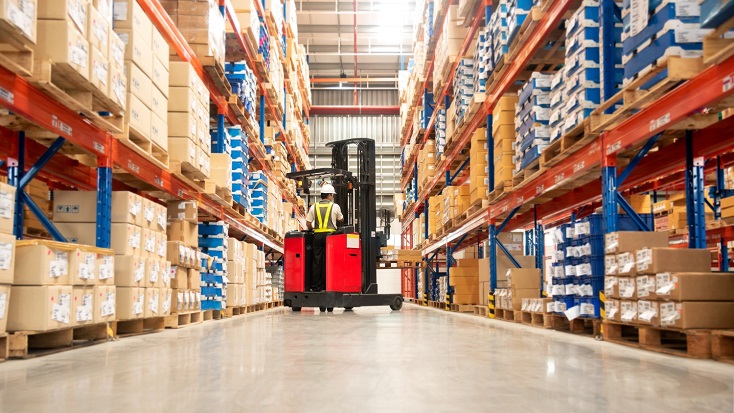Lighting plays a significant role in the efficiency, safety, and energy consumption of your warehouse operations. Upgrading your warehouse lighting systems can bring transformative improvements in various areas, from reducing costs to improving working conditions. Here’s a detailed look at the benefits you can expect.
1. Improved Energy Efficiency
Modern lighting systems, such as LED lights, consume significantly less energy compared to older fluorescent or metal halide systems. For example, LEDs use about 50–70% less electricity than traditional options. This reduction directly impacts your utility bills, lowering overall operating costs. Additionally, energy-efficient lighting systems generate less heat, reducing the workload on your HVAC system.
By upgrading, you align with energy-saving goals, creating long-term benefits both environmentally and financially. The investment quickly pays for itself through noticeable cost savings over time.
2. Lower Maintenance Costs
Outdated lighting systems often require frequent maintenance due to shorter lifespans and more complex designs. Upgrading to LED low bay lights reduces the need for replacements and repairs, thanks to their durability and longevity. High-quality LEDs can last up to 50,000 hours or more, which translates to years of reliable performance.
This decrease in maintenance not only saves money but also reduces disruptions to warehouse operations. Less time spent on replacing fixtures means your team can focus on tasks that drive productivity.
3. Better Employee Productivity
The quality of lighting directly affects worker performance. Studies show that well-lit environments help reduce eye strain and fatigue, allowing employees to work more efficiently. Poor lighting can lead to slower processing speeds and more mistakes, which are costly in time-sensitive operations.
By upgrading your warehouse lighting, you create an environment where workers feel comfortable and focused. Improved visibility boosts accuracy in tasks like inventory management, packing, and order picking.
4. Enhanced Workplace Safety
Poor lighting increases the risk of accidents in warehouses, where forklifts, heavy machinery, and high shelving units are common. Dim or flickering lights can lead to misjudgments, slips, or other hazardous situations. Upgraded lighting provides consistent brightness, ensuring clear visibility in every corner of your facility.
Many modern lighting systems also offer customisation options, allowing you to adjust brightness levels based on specific needs. For instance, areas with heavy machinery can benefit from higher light intensity to improve worker focus and reduce errors.
5. Improved Environmental Impact
Upgrading to energy-efficient lighting systems significantly reduces your warehouse’s carbon footprint. LEDs, for example, contain no harmful substances like mercury, making them safer to dispose of than traditional fluorescent bulbs. Additionally, their low energy consumption reduces greenhouse gas emissions from power generation.
If your business has sustainability goals or needs to comply with environmental regulations, upgrading your lighting systems is a simple yet impactful step towards achieving these objectives.
6. Customised Lighting Solutions
Modern lighting systems offer advanced features like motion sensors, dimming capabilities, and daylight harvesting. These allow you to optimise light usage based on your warehouse’s specific needs. For example, motion sensors can reduce energy waste by automatically dimming or turning off lights in unused areas.
Customisable options make it easier to create an efficient, adaptable setup that supports your daily operations. These technologies also provide flexibility, enabling you to adjust lighting as your business evolves.
7. Compliance with Regulations
Many jurisdictions now have regulations aimed at improving energy efficiency and workplace safety. Upgrading your lighting ensures compliance with these standards, reducing the risk of fines or penalties. For instance, improved lighting can help meet health and safety requirements by minimising risks associated with poor visibility.
Staying ahead of regulatory changes demonstrates a proactive approach to safety and sustainability, improving your company’s reputation in the process.
8. Improved Inventory Management
Clear and consistent lighting helps employees locate and handle inventory more effectively. Poor visibility can lead to misplaced items, delayed shipments, or errors in stock counts. High-quality lighting ensures that every label, barcode, and item is easy to spot, even in large or crowded warehouses.
This improvement not only reduces the risk of errors but also speeds up processes like picking and packing, leading to faster order fulfilment and happier customers.
9. Increased Property Value
Investing in modern lighting systems can increase the overall value of your warehouse. Properties equipped with energy-efficient and low-maintenance systems tend to appeal more to prospective buyers or tenants. Lower operating expenses combined with enhanced safety features make such facilities a sensible option for businesses.
Even if you don’t plan to sell, the upgraded systems serve as a long-term asset, keeping your warehouse competitive in a rapidly evolving market.
10. Better Light Quality
Older lighting systems often produce uneven or harsh light, leading to an uncomfortable working environment. Modern lighting upgrades provide uniform illumination with better colour rendering. This means colours appear more natural, which is especially important in areas like quality control or product inspection.
Better light quality also contributes to a professional appearance, making your warehouse look more organised and welcoming for staff and visitors alike.
 Final Thoughts
Final Thoughts
Upgrading your warehouse lighting system is a practical move with far-reaching benefits. From cost savings and improved safety to enhanced productivity and sustainability, the advantages outweigh the initial investment. With modern technologies and energy-efficient options readily available, there’s no better time to make the switch.
If you’re considering an upgrade, evaluate your current lighting setup, identify pain points, and explore options that fit your operational needs. This thoughtful approach will help you maximise the benefits and create a brighter, more efficient workspace.




Comments are closed.